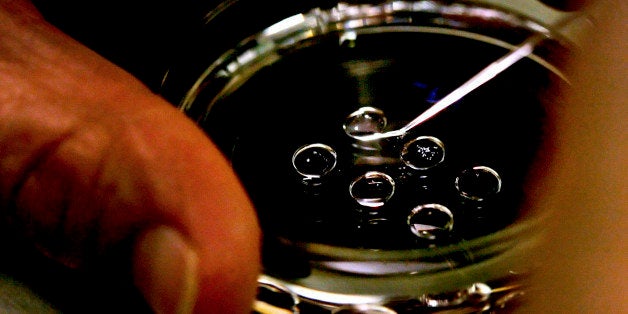
About eight years ago, as the controversy about research involving human embryonic stem cells was winding down and Barack Obama was about to take office, I had one of my regular lunches with a respected conservative policy expert. We had come to be friends who respectfully disagreed about embryonic stem cell research and other bioethics issues.
That day I told him that there were still bigger issues brewing that involved human reproductive materials. For example, the opponents of research that involved destroying human embryos had celebrated a new technology developed in Japan that turned regular adult cells into something resembling potent embryonic cells. What many failed to notice is that that same technology could be used to turn adult cells into human egg cells. Thus in theory two men could produce a baby with the second man's sperm and without a woman to provide an egg.
"Oh," my friend said when I pointed this out to him, "I would definitely support federal legislation to prevent that." I was struck at his vehemence, but not surprised.
The era of male-only embryo production is not yet here, but a major step in that direction was reported this week by another Japanese team. They showed that cells from the tails of female mice could be turned into egg cells. This work and lessons learned from other experiments will be applied to creating egg cells from male mouse skin cells, then to primates. So far the failure rate is very high but the laboratory systems will improve to the point that the production of egg cells from males will be routine.
That will take years, but when it does there will be a flurry of interest among men who wish to make a baby together. A woman will still be needed to gestate the embryo -- unless of course there is also an artificial placenta by then. Whether such experiments should be permitted will provoke ethical arguments on several levels. One argument will involve safety for the intended fetus and for the birth mother, another the philosophical implications of making babies with two biological fathers, and yet another the permissibility of surrounding those would-be eggs with human fetal cells to make them fertile.
This experiment is not the only event that will push bioethics back into the forefront of the public conversation. In a few months the National Academies will publish a consensus study about the implications of the new gene editing technologies.
The implications of two-father embryos also deserve serious discussion. At the moment, though, thoughtful social conservatives like my lunch partner are consumed with an election cycle that has left them out in the cold. It will remain for the next presidential administration to lead a process that gives all views a seat at the table.
A previous version was published on the Hastings Bioethics Forum.
